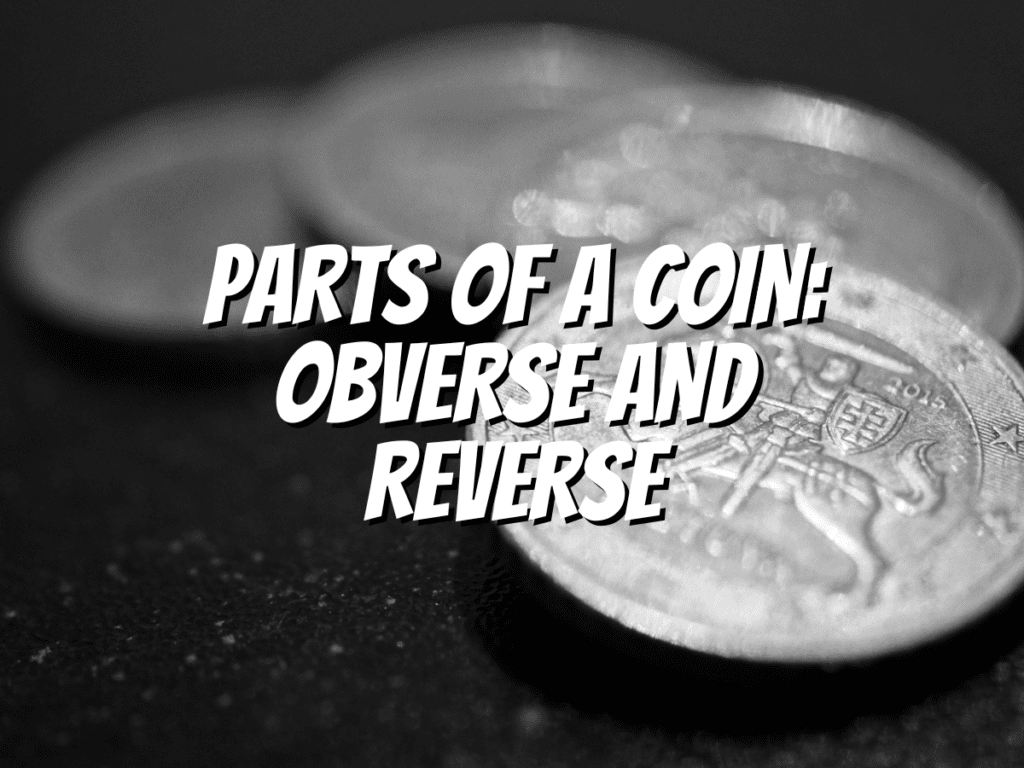The obverse and reverse sides of a coin are its most important features, as they are the faces of the coin.
However, they have many other names and terms that might be confusing at first glance. So, we’ll break it down for you.
What are a coin’s obverse and reverse sides? What does “heads” mean? And what about “tails”? Let’s find out!
Parts of a Coin:
Obverse Side of a Coin

The obverse side of a coin is the face side, which is usually engraved with the image of a person, animal, or symbol. The obverse is called “heads” about its appearance as a portrait.
The opposite side is known as the reverse and has no special name. When holding a coin upright in front of you, its obverse will be facing up while its reverse will be facing down (or vice versa).
Parts of the Obverse Side of a Coin
- Edge – outer surface, which has lettering, reeding, or is plain.
- Rim – is the edge of a coin next to the field.
- Bust – an image of a person, like Abraham Lincoln, on the penny.
- Field – is the blank area of background on a coin.
- Relief – the markings on the coin raised above the surface.
- Mint mark – is a small letter that shows which Mint location made the coin. The most common mint marks are the “P” for Philadelphia and the “D” for Denver.
- Date and inscriptions.
Reverse Side of a Coin

On the reverse side of a coin, you’ll find the image of the country’s emblem and some text that typically describes its value.
For example, an American quarter will show an eagle on one side and “United States of America” on the other.
Canadian coins have maple leaves on their reverses with “Canada” written below them.
In Australia, one side features a kangaroo with “Australia” printed around it, while another shows an outline map of Australia with various landmarks labeled.
As we mentioned before, if you look closely at the images on both sides of a coin—the obverse and reverse—you’ll see that they’re almost identical except for what’s happening inside them (whether there are people or buildings).
Edge vs. Rim
- Edge – is the outermost part of a coin, and
- Rim – is the edge next to the field (the raised portion of a coin). Both are parts of coins, but they can be defined differently.
Other Terms for the Obverse Side and Reverse Side of a Coin
The obverse side of a coin is called heads or tails, and the reverse side is called tails. That’s because before you flip a coin to decide, you must know which side.
The word “obverse” and “reverse” come from Latin words meaning “backward,” but they’re used to describe the front and back sides of coins as well.
The head’s side is also known as the front or obverse.
The Difference Between the Obverse Side and Reverse Side of a Coin

The obverse side is the front of a coin, also known as the face or head. If you’re looking at a coin from its edge-on angle (like when you flip it in your hand), that side is called its “obverse.”
The reverse side is found on the back of a coin, which might also be called it’s tail or bottom. This cannot be very clear because some coins have both sides displayed on one face—but if you look at them head-on, they will still have one side facing up and one facing down.
Before you go…
In this post, we covered the parts of a coin. This is a good lesson for anyone interested in collecting coins or currency.
Check out my next article: “Where Does the Term “Heads or Tails” Come From?“
Related Articles:


I have a 2013 Nevada quarter Great Basin is showing on the front side of the coin. what is this called. When images from one side show on the other
What is it called when the back of my quarter shows on the front .